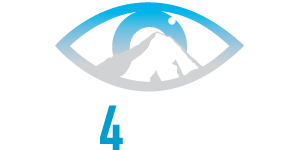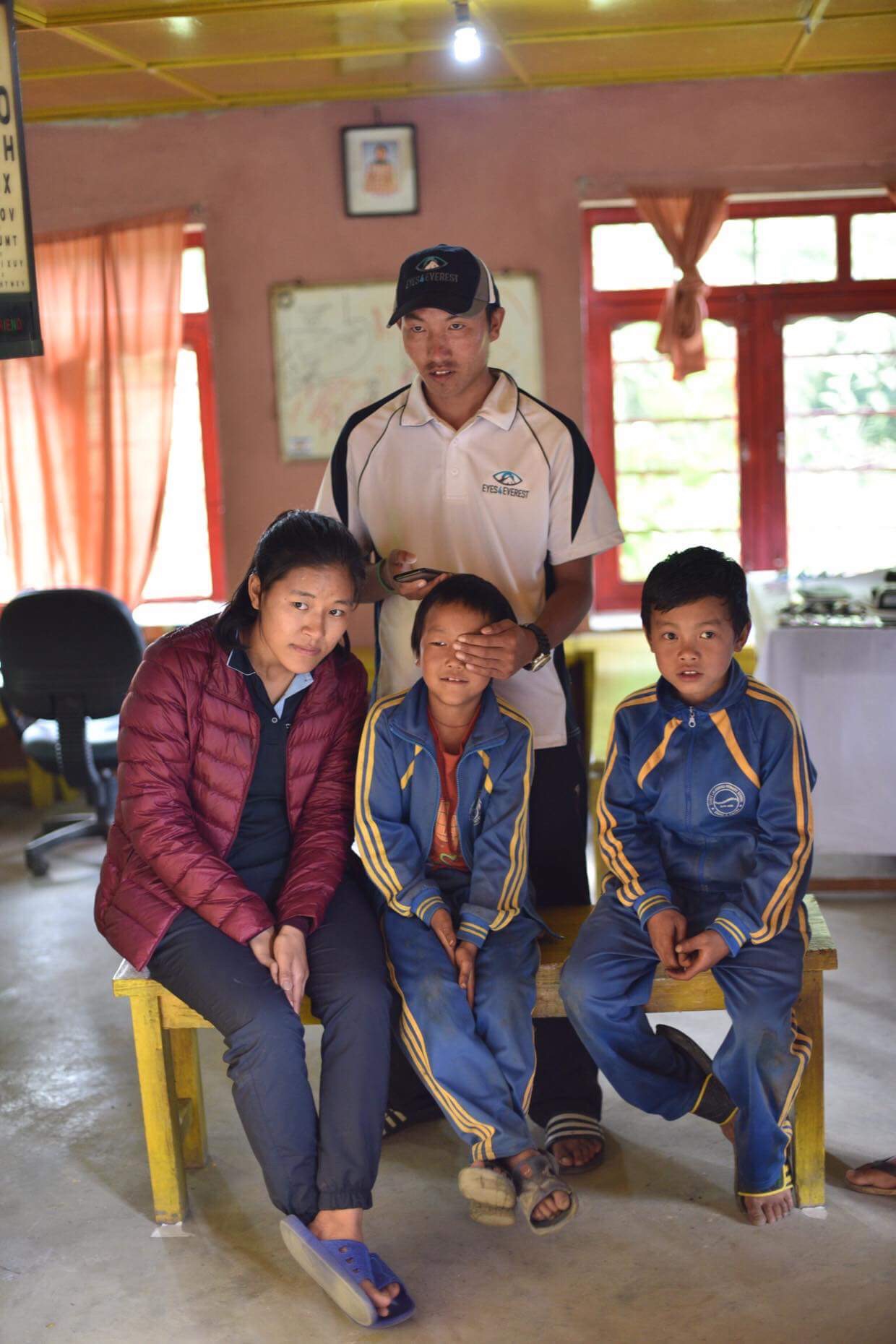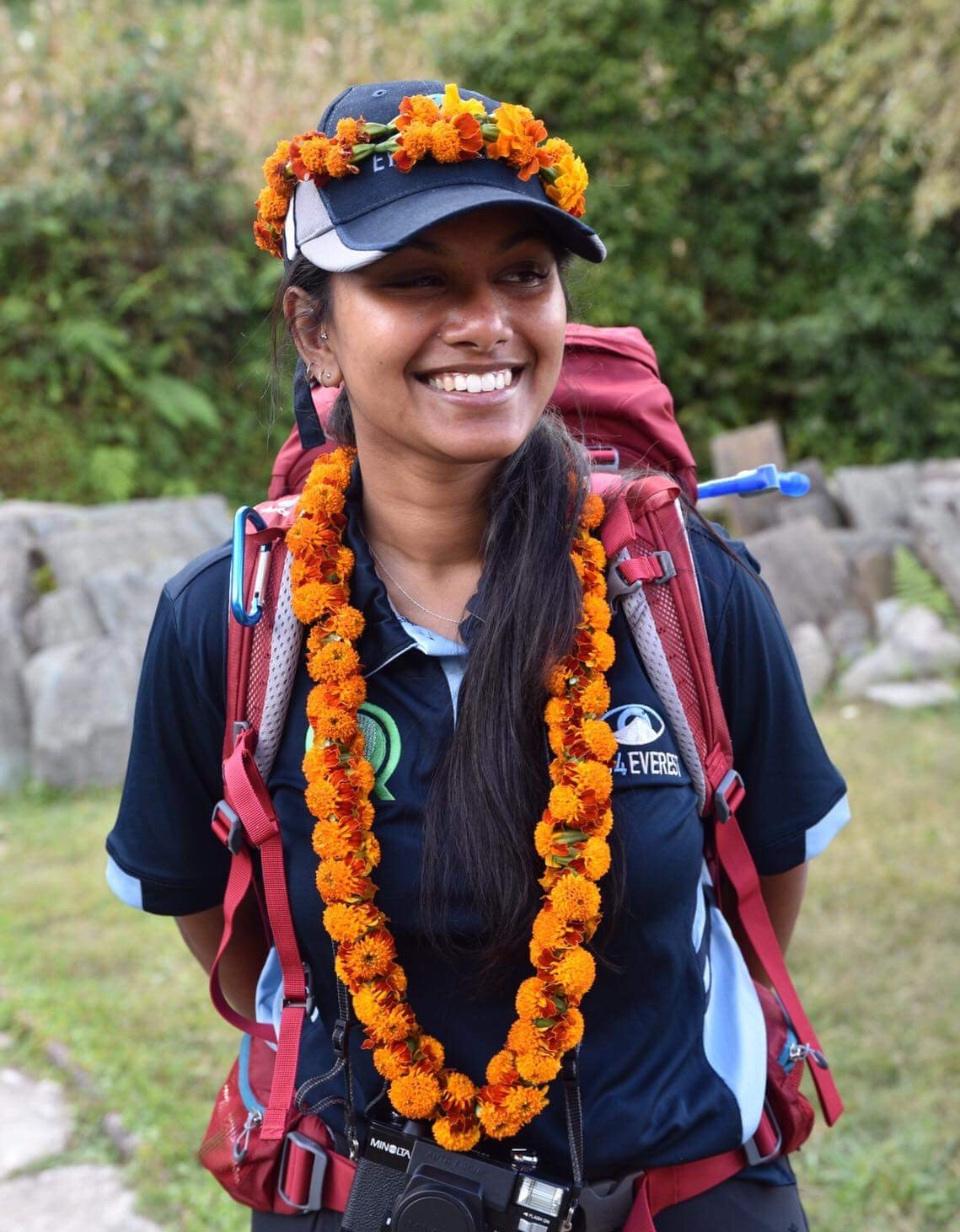ABC Adventures: Part Two
Notes from the Annapurna Sanctuary
Written by Pete Gardner
“For a long time, Chan had problems with her eyesight. When news came of our arrival, she trekked three hours to see us. The whites of her cataracts were clearly visible. Chan could only see the large letters on the chart.
Lenses improved her vision a little but it was not enough. Megan and Jenny determined there was no glaucoma, corneal or retinal damage. Tashy prepared a referral for cataract surgery so arrangements could be made to travel to Pokhara. The operation would have a massive impact on her life.”
Dhawalagiri, the 7th highest peak in the world, dominated the cloudless skyline over the tiny mountain village of Chitre, as we set up for our last clinic before trekking back to Ghorepani.
We were not expecting as many people this morning having seen almost everyone from village the day before. Through the clinic a few pairs of reading glasses were dispensed. A farmer with uncorrected high astigmatism was happy he would see his TV clearly. As we were wondering if it was time to pack up, two elderly sisters came walking up the track. Word had reached Chan Mati Pun and her sister, that Eyes4Everest were at the Chitre health centre and they made the three hour trek across the mountain to see us.
Chan and her sisters
Having now been in Nepal for ten days, I reflected on how much I have fallen in love with this place and the people who live here. It has also been my immense privilege to work alongside our team of Australian optometrists and dispensers, but more so our guides, porters and Tashy our resident Nepalese optometrist whose drive and commitment to the Eyes4Everest cause is nothing short of astounding.
Tashy and Kami testing the local school children
Tashy studied optometry in India, leaving her family in the Everest region to study. She became aware of Eyes4Everest whilst in her third year when a clinic was held in her home village and her parents were tested. Tashy volunteered her services upon graduating and now works at a clinic in Kathmandu with special dispensation to join the Eyes4Everest missions. She will leave Team ABC when we return to Kathmandu and immediately join Team EBC to the Everest region and onward to the Everest base camp.
I have learned the Nepali people have a caste system which is determined by the region you are from. Unlike the negative aspects and division often perceived from caste, the Nepalese have no animosity between groups and mingle and intermarry freely. For example, the Everest region is the home of the Sherpa and Rai peoples. The Sherpas are best known as specialist mountain guides, and Kami, our chief guide, is a master of his craft. The area we are trekking through is home to the Gurung, Magar and Pun peoples. The Gurung make up the majority of the Ghurka regiments of the British and Nepalese army’s and most Gurung families have at least one member in the services, providing a good steady income to send home. Otherwise, most of the Himalayan people survive with little income, subsistence farming on the hillsides. The tourism and trekking industry brings vital income to the area.
Ashley and Sasina at the Management Station
Unsurprisingly services are scarce. Many villages have a basic health clinic such as the one at Chitre, often sponsored through charitable donations. During our Chitre clinics we had great help from the resident nurse Sasina. She is two months in to a five year placement sponsored by the Himalayan project, and is already a welcome and valued member of the community.
“In medical emergency emergencies, helicopter evacuation to the municipal centre of Pokhara is the only option... if you can afford it. If not the patient will need to walk or be carried, often for 2-3 days to the nearest bus station at Kimrung Khola.”
Eyes4Everest makes a very valuable contribution to these communities. Often, it is the only opportunity for a person to get their eyes examined. Leaving Chitre was hard, many of the villagers gathered to bid us farewell, and we were all decked with garlands of marigold as a farewell gift. Eventually we tore ourselves away, with final goodbye hugs and a wave. We may have arrived as strangers, but we left as friends.
Ashley decorated with garlands of marigold
After the trek back up the hill to Ghorepani we hit the sleeping bags for an early night, as Kami was leading us up Poon Hill before first light.
There are very few people you implicitly trust with your life the moment you meet them. Kami Tenzing Sherpa is one of those people. A professional mountain guide, he is also a very humble man. If I had climbed Everest three times, I would be telling everyone I met! Kami has also climbed Ama dablam, a technical peak in the Everest region, along with several mountains over six thousand meters. He will be leading another expedition to the summit of Everest in the next climbing season.
Kami spends the climbing season in April/May and trekking season from September to November, away from his young family. With a seven year old daughter and two and a half year old son, he says the hardest part of his work is leaving them. He spends the remainder of the year training and improving his guiding qualifications. Kami started guiding for Eyes4Everest 3 years ago taking over from his father in law when he retired. He feels very committed to the project and is proud that he has seen hundreds of people benefit from the work. I must add, Kami has a wonderful singing voice, and it is a pleasure to listen to him humming Nepali folk songs as we walk the trail.
Our other guide and translator on the trip is Santosh. He is from the same village as Kami, Khumjung in the Everest region. Santosh and Kami are old friends, and guide with Eyes4Everest together. Santosh also has a young family. His daughter is nine and his son is two and a half. Like Kami, Santosh is guiding the upcoming EBC trip, which is fortunately passing through khumjung, where he is looking forward to seeing his family for a short time. He tells me he is guiding one more trek after EBC, and is looking forward to being back home to be with his family and resuming his work as a carpenter.
The Eyes4Everest ABC Team. Santosh and Kami are pictured on the bottom left row
We reached the top of Poon Hill, or more accurately Pun Hill, after the Pun people of the region. Magnificent views of the Dhawalagiri and Annapurna ranges greeted us, illuminated by the full moon, glowing against the blackness of the predawn sky. Few words can adequately describe the change in light as the sun rises slowly from behind Machhapuchhte, the dawn light first catching the slopes of Dhawalagiri before washing over the ranges in a slow dance of light and colour. Poon Hill is advertised as the greatest viewpoint in the world. For once I think the product may well match the ad.
On returning to the lodge our porters Dil, Laxman and Mani were getting ready to set off. We hastily packed our gear and these three immensely strong men prepared the packs for carrying. To be honest, once my bag is filled with my sleeping bag, clothes and heaps of optometry equipment, I have enough trouble getting it down the stairs. These supermen carry this, all the rest of the consulting equipment, and everyone else’s gear up the mountains, whilst we saunter along with our day packs.
Our Three Porters - Laxman, Dil and Mani
Mani has been portering for the last three years on season, and is a tea farmer in his home village of Ilam in Nepal’s tea garden area, being newly married he is looking forward to seeing his wife briefly in Kathmandu before portering for this years EBC mission.
Laxman has been portering for 4 years, and works as a painter in the off season. From Salere in the Everest region, he tells me he too misses his four year old daughter when he is away, but does enjoy the work although it is hard.
Dil comes from Kanku in the low Everest region. Prior to portering for the last two years he worked in construction in Saudi Arabia. There was no hesitation when I asked which he preferred, his answer given with a big smile. He continues to work in construction the rest of the year, happy to spend the time with his eighteen month old daughter.
Although Dil, Mani and Laxman have limited English, all three were invaluable help during the clinics, translating and shepherding the people between stations. They made the clinics run much more smoothly and frequently ensured we were using the right notes for the right patient, as it was easy for the ipods with the eye exam records app to get mixed up.
Journey to Annapurna Base Camp
As I write this, we are on our way to Annapurna base camp. The optometry equipment has been placed in storage at Chomrong, broadening the smile on the faces of our porters. Kami briefs us each day on what to expect on the trek, whether lots of climbing through magical old growth rhododendron forest, or descent into stunning river gorges. Occasionally we have a “flat” section with “Nepali flat” becoming a standing joke with the team.
As we trek up the Modi Khola valley, steadily gaining altitude, the terrain is changing, lush rainforest blending into bamboo, and sedimentary rock with rich soils giving way to slabs of exposed granite. Annapurna One is still not visible from our current location, but each day Annapurna South, Hiunchuli and Machhapuchhre dominate the skyline, growing ever larger as we get ever closer to the base of these great ancient sentinels.








